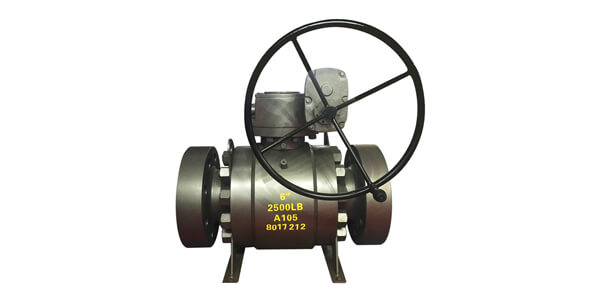When system integrity and safety are non-negotiable under extreme pressure, the choice of valve becomes a critical engineering decision. High Pressure Ball Valves are specifically engineered to perform where standard valves would fail. This guide delves into what sets these robust components apart, their key design features, and how to select the right one for your most challenging operations.

What is a High Pressure Ball Valve
A High Pressure Ball Valve is a specialized quarter-turn valve designed to isolate and control the flow of aggressive media in systems typically operating above 10,000 PSI (690 bar). Unlike standard ball valves, they are characterized by their heavy-duty construction, advanced sealing mechanisms, and materials capable of withstanding significant mechanical and thermal stress without compromising performance or safety.
Key Design Features That Differentiate High Pressure Ball Valves
The ability to handle extreme pressure isn’t a matter of chance; it’s a result of intentional, precision engineering. Here are the critical design elements:
Reinforced Body and Robust Construction:
These valves often feature a compact, forged body made from high-strength materials like stainless steel (SS304, SS316), duplex stainless steel, or chromium-molybdenum steel (A105). Forging provides a superior grain structure, enhancing the valve’s mechanical strength and impact resistance.
High-Pressure Stem Design:
The stem is reinforced to prevent blow-out under pressure. A robust stem, often with a blow-out-proof design, ensures that the internal pressure cannot force the stem out of the valve body, a critical safety feature.
Advanced Sealing Systems:
This is the heart of a high-pressure ball valve.
• Low-Friction Seats: Seats made from reinforced PTFE (RPTFE), PEEK (Polyether Ether Ketone), or metal are used. These materials maintain their sealing integrity and have minimal friction during operation, even under extreme force.
• Spring-Loaded Seats: Many high-pressure designs incorporate spring-loaded seats. The springs apply a constant pre-load force on the seat, ensuring a tight seal against the ball at both low and high pressures, and compensating for wear over time.
Reduced Port vs. Full Port:
While full-port valves offer low flow resistance, high-pressure applications often use reduced-port (or standard-port) designs. A thicker wall around a smaller port increases the valve’s pressure-containing capability, a necessary trade-off for ultimate safety.
Critical Applications of High Pressure Ball Valves
These valves are indispensable in industries where system failure is not an option:
• Oil & Gas: Wellhead control, Christmas tree assemblies, hydraulic fracturing (fracking) units, and high-pressure gas transmission lines.
• Power Generation: Main steam lines, feedwater systems, and other critical high-pressure/temperature circuits in thermal and nuclear plants.
• Chemical & Petrochemical: Handling aggressive catalysts, high-pressure reactors, and injection systems.
• Water Jet Cutting: Controlling the ultra-high-pressure water (up to 90,000 PSI) used in industrial cutting systems.
• High-Pressure Test Rigs: For validating the integrity of other components like pipes, fittings, and valves.
How to Select the Right High Pressure Ball Valve
Selecting the correct valve is a multi-faceted process. Consider these factors:
1. Pressure Rating (PSI/Bar):
Ensure the valve’s maximum working pressure (WP) and pressure rating (e.g., ANSI Class 1500, 2500, 4500) exceed your system’s maximum operating pressure, including any potential surge pressures.
2. Temperature Range:
Verify that the seat and seal materials are compatible with your system’s minimum and maximum temperatures.
3. Material Compatibility:
The valve body, trim, and seals must be compatible with the media (fluid or gas) to prevent corrosion and degradation. Consider factors like chlorides, H2S content, and pH levels.
4. End Connections:
Choose from robust connections like threaded (NPT), socket weld, or butt weld, ensuring they are suitable for the pipe schedule and material.
5. Fire-Safe Design:
For oil and gas applications, certifications like API 607/API 6FA ensure the valve will contain media in the event of a fire.
6. Actuation:
For automated systems, ensure the valve is designed to interface with pneumatic or electric actuators that can generate sufficient torque to operate under full system pressure.
Why Partner with a Specialist Manufacturer?
At NSW Valve, we understand that a high pressure ball valve is more than just a component; it’s a commitment to safety and operational excellence. Our valves are engineered with a focus on:
• Precision Forging and Machining for unmatched structural integrity.
• Rigorous Testing Protocols, including high-pressure shell and seat tests, ensuring every valve performs as specified.
• Expert Material Selection guidance to match your specific operational environment.
Ready to specify the right high-pressure solution for your project? Contact our engineering team today for a personalized consultation and technical data sheets.
Post time: Aug-14-2025






